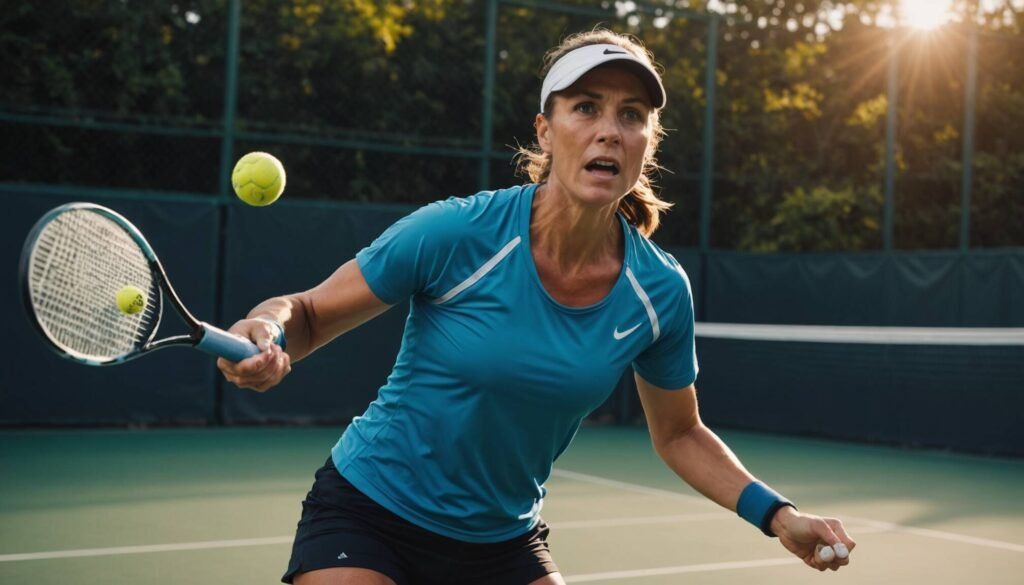Kate Fahey on Pickleball Intensity: Embracing the Sport’s Emotional Side
Introduction
In the rapidly evolving world of professional pickleball, few players have garnered as much attention for their playing style and on-court demeanor as Kate Fahey. Currently ranked #2 in women’s singles, Fahey has recently made headlines not just for her impressive victory at the PPA Vintage Open in Sacramento, but also for her passionate and vocal approach to the game.
The Path to Professional Pickleball
Fahey’s journey to becoming one of pickleball’s most dominant players is rooted in her extensive tennis background. As a former All-American at the University of Michigan, she developed not only her technical skills but also her characteristic emotional intensity on the court. This competitive fire has carried over into her pickleball career, where she’s become known for her vocal expressions during matches.
Understanding the Emotional Aspect
During her recent appearance on the PicklePod with Zane Navratil, Fahey provided valuable insights into her playing style and emotional approach to the game. She openly discussed how her on-court expressions serve as a crucial outlet for managing match-related stress and anxiety. Rather than viewing these outbursts as mere emotional reactions, Fahey describes them as an essential component of her competitive toolkit.
Addressing the Criticism
Fahey’s approach has drawn both admirers and critics within the pickleball community. She acknowledges the criticism she receives, particularly through social media, and has taken proactive steps to address it, including working with a sports psychologist. However, she maintains that authentic self-expression is crucial to her success on the court, stating, “It’s not in my nature to be completely mute. I’ve tried it and I play horribly. It’s not who I am.”
The Evolution of Professional Pickleball
The discussion around Fahey’s playing style reflects a broader conversation about the evolution of professional pickleball. As the sport continues to grow and attract more high-level athletes, questions about appropriate on-court behavior and emotional expression become increasingly relevant. Fahey’s assertion that “pickleball should be a loud sport” challenges traditional notions of court etiquette and suggests a more dynamic, expressive future for the game.
For Newcomers to the Sport
For those new to pickleball, it’s important to understand that the sport combines elements of tennis, badminton, and table tennis, not just in its rules but also in its culture. While some players prefer a quieter, more reserved approach, others, like Fahey, bring a more energetic and vocal style to the court. This diversity in playing styles and emotional expression helps make pickleball accessible and appealing to a wide range of players.
The Impact of Social Media and Public Perception
The rise of social media has amplified discussions about player behavior and sportsmanship in pickleball. Fahey’s experience with online criticism highlights the challenges professional athletes face in the digital age. Her openness about working with a sports psychologist demonstrates the importance of mental health support for athletes dealing with public scrutiny.
Looking Ahead
As pickleball continues to grow in popularity and professionalism, the sport will likely continue to grapple with questions about emotional expression and court conduct. Fahey’s perspective offers valuable insights into how players can maintain their authentic selves while competing at the highest level. Her story suggests that success in pickleball doesn’t require conforming to a single model of behavior, but rather finding a style that allows players to perform at their best.
Conclusion
Kate Fahey’s approach to pickleball challenges conventional wisdom about how athletes should behave on the court. While she acknowledges the need to manage her emotional expressions, particularly when directed at opponents, she remains committed to authentic self-expression as a crucial element of her competitive success. Her story highlights the ongoing evolution of pickleball culture and the importance of accepting diverse playing styles in the sport’s continued growth.



